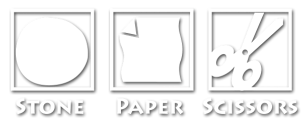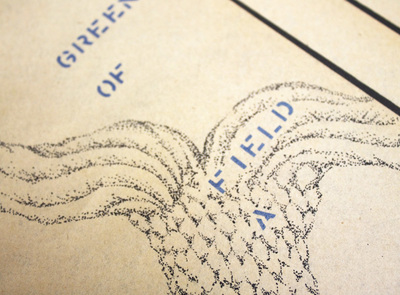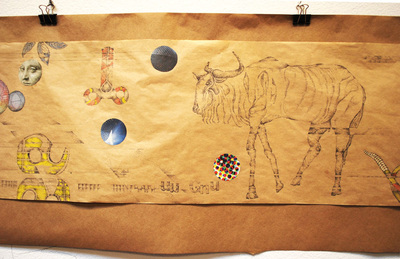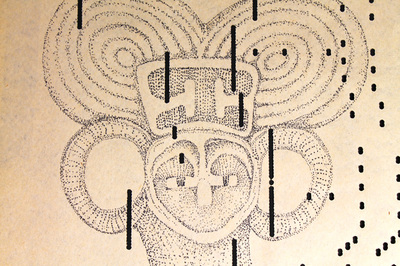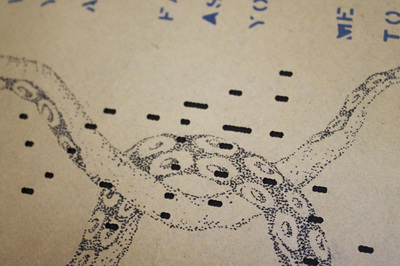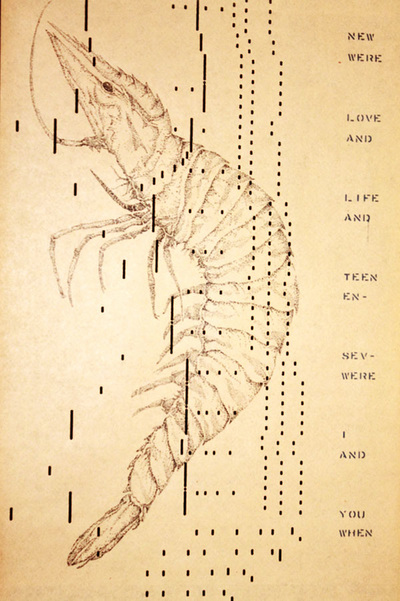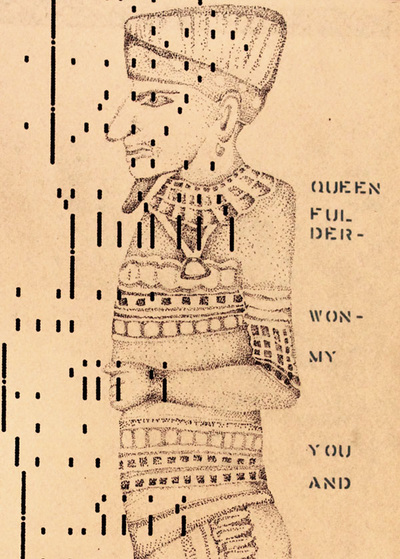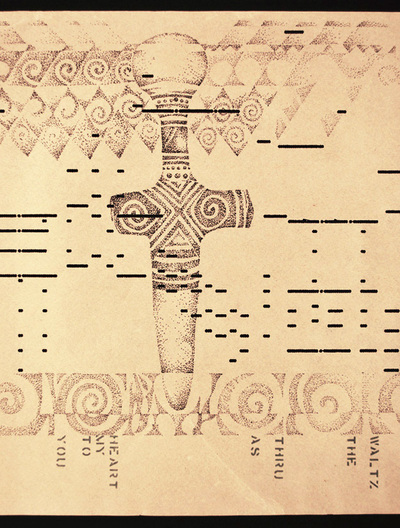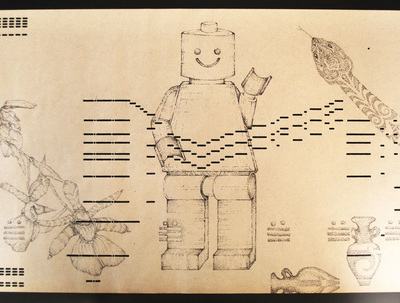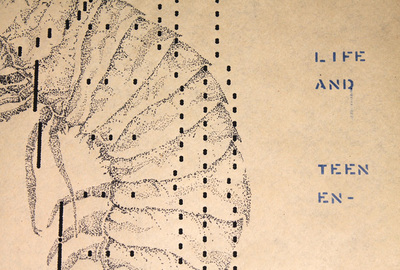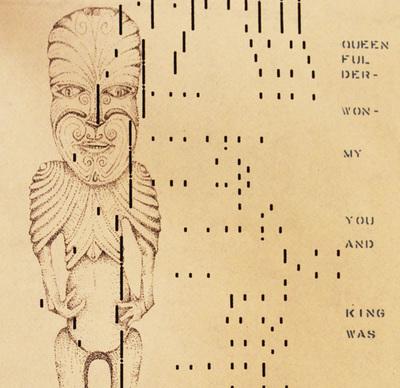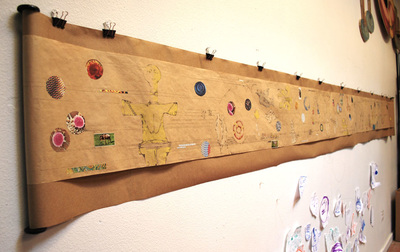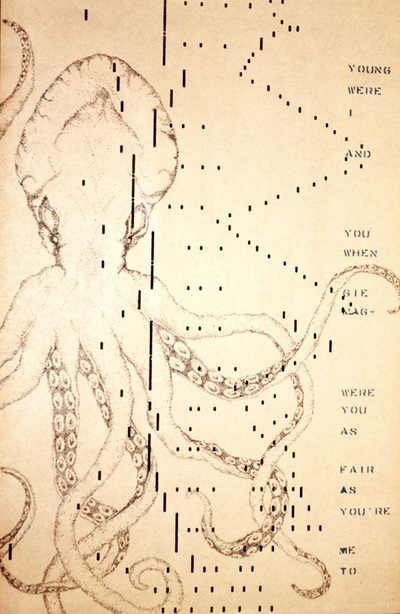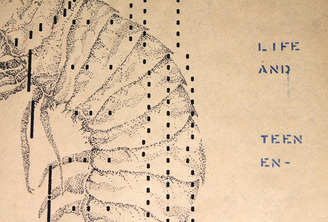
It’s About Time
Drawings in stippled ink on player piano paper, a “pseudo-scientific” reference to realistic illustration, intended to depict something as vast as time, with the only the smallest mark possible.
The drawings are a pseudo-scientific reference to anatomical and archeological illustration with images of both ancient and pop-cultural artifacts.
Cultural Artifact Series is a nod to “retro-techification”, the intersection of ancient technologies and the repurposing of information, helping to render information and the technology useless and simultaneously more meaningful. A series of obsessive drawings on player piano roll paper becomes a meeting place for Legoman and a Cycladic figure, and a modern day scroll inscribed with life lessons in song; “When You and I Were Seventeen” and “Que Sera, Sera”.
An exhibition note about “It’s About Time”, by CH 2014, “Lynn Susholtz’s artistic career (and life) revolves around a non-traditional, non-linear approach to the dimension of time. In her 1000 years, Susholtz has risen to the myriad challenges associated with calendars and measuring temporal distance. Her geologic perspective on the day-to-day makes for a unique approach to past/future relationships. Events in the Susholtz paradigm interact with traditional historical narrative and the personal Susholtzian timeline in ways that allow Jimi Hendrix and a Cycladic figurine to dance together in an epic Texas swamp. The work displayed here demonstrates both the Susholtz perspective on time and Susholtz’s ability to distort herself into the traditional space-time coordinates required to meet deadlines and hang shows punctually.”
Player Piano Paper and Punch Technology History
Form and Emptiness
1725: Jacquard loom punch patterns
1833: Babbage number cards proposed for the analytical engine
1842: Player piano rolls, French patent by Claude Seytre
1890: Hollerith punch cards for the census and Tabulating Machine Company (later renamed IBM)
2000: Hanging Chad
